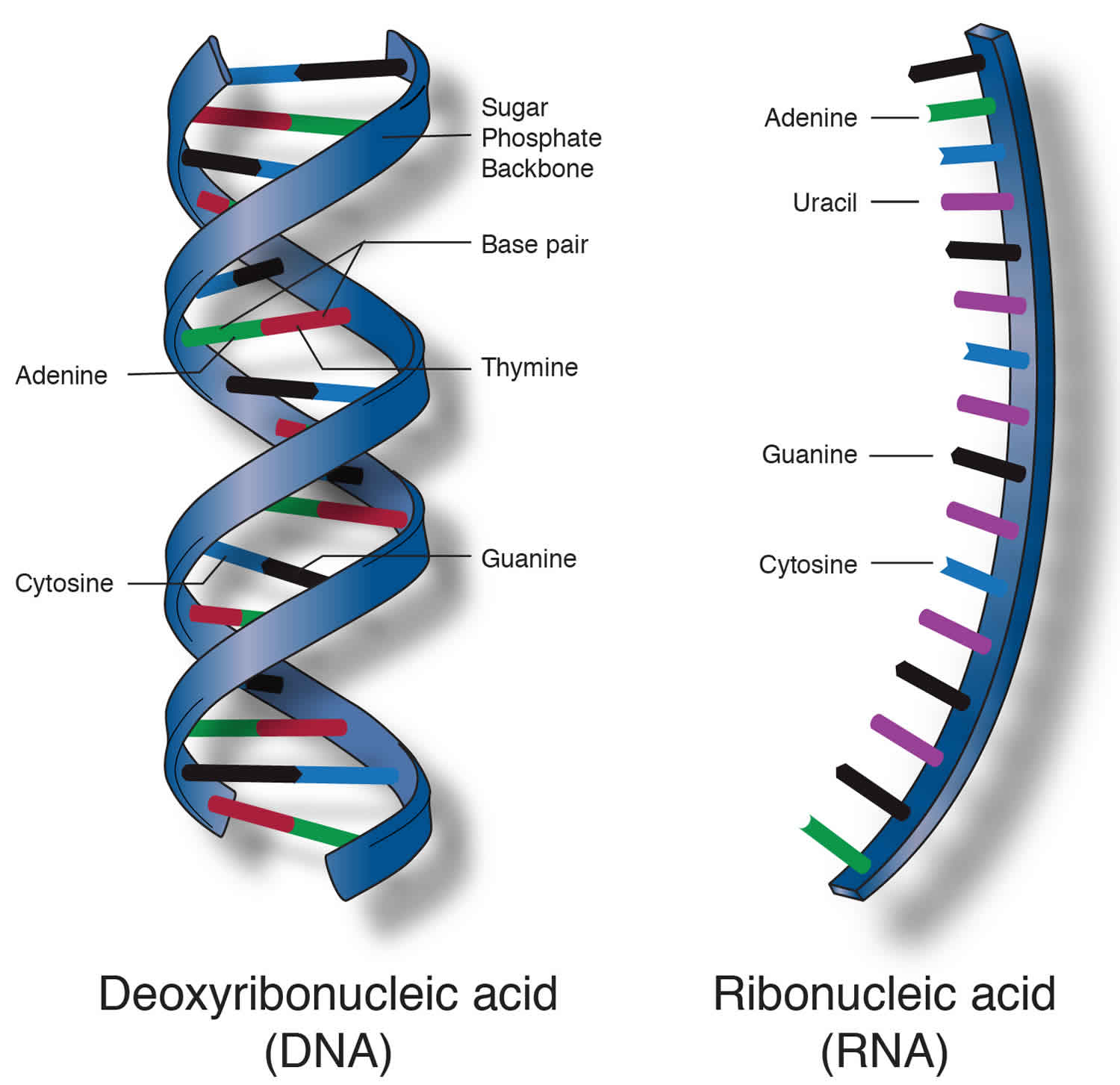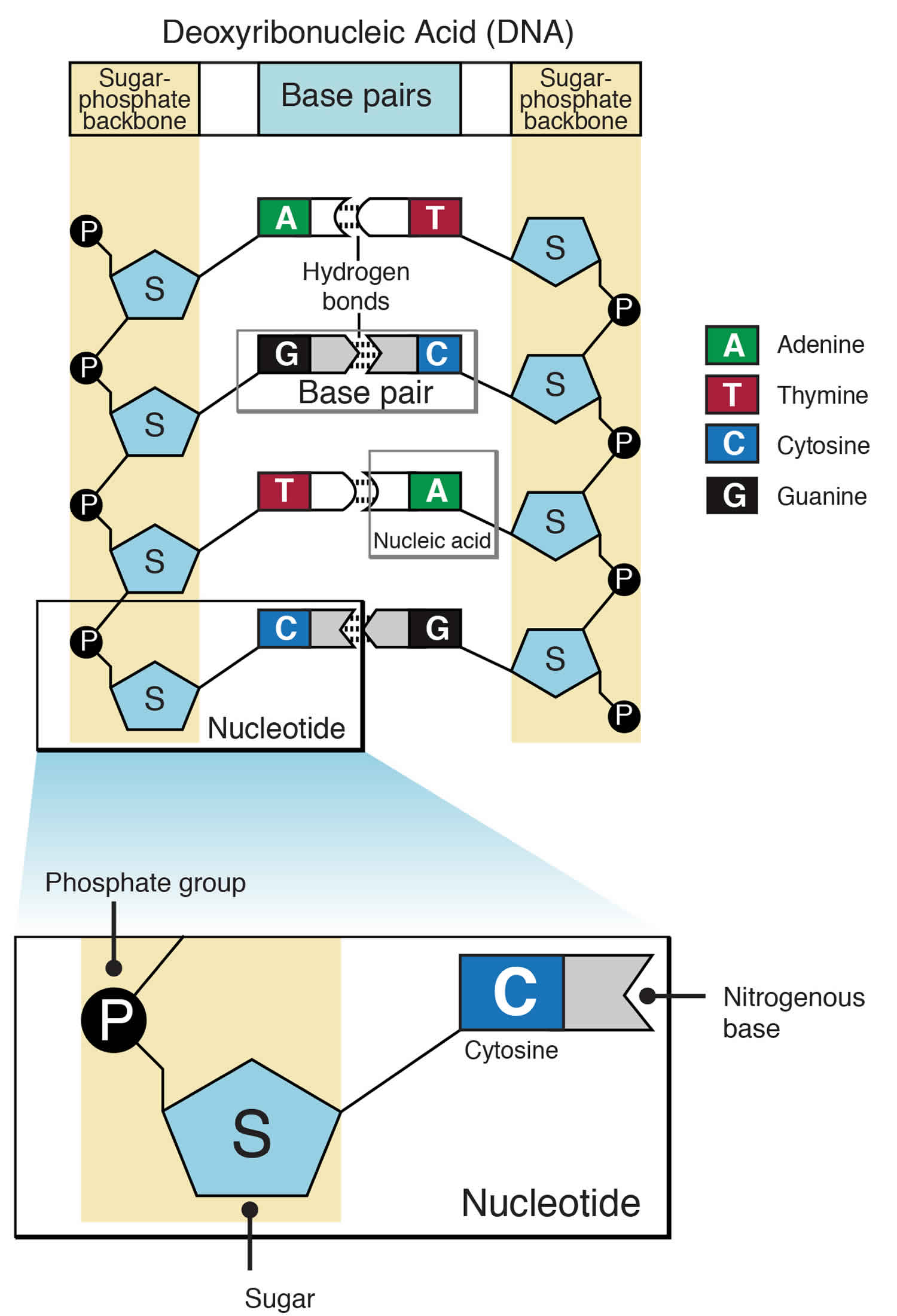Contents
What is nucleic acid
Nucleic acid is an important class of large molecules (macromolecules) found in all cells and viruses. Nucleic acid are actually made of polymers of strings of repeating units and the two most famous of the nucleic acids, that you’ve heard about, are deoxyribonucleic acid (DNA) and ribonucleic acid (RNA). And nucleic acids the functions of nucleic acids in the cell act to actually store information and express genetic information. The cell encodes information, much like you recorded on a tape, into nucleic acids. So the sequence of these molecules in the polymer can convey “make a protein”, “please replicate me”, “transfer me to the nucleus…” The other amazing part about nucleic acid is that they’re very stable proteins. And so if you think about the need to convey genetic information from one cell to another, you would want a molecule that is very stable and doesn’t fall apart on its own, and that’s a major feature of nucleic acids. The name “nucleic acid” comes from the fact that they were first described because they actually had acidic properties, much like the acids that you know. And the nucleic part comes from the fact that they were first isolated because they were found in the nucleus. And as you know that’s where the DNA (deoxyribonucleic acid), one of the types of nucleic acids that we’ve been talking about, is predominately found. Deoxyribonucleic acid (DNA) encodes the information the cell needs to make proteins. A related type of nucleic acid, called ribonucleic acid (RNA), comes in different molecular forms that participate in protein synthesis.
Figure 1. Nucleic acid
Types of nucleic acid
Nucleic acids are deoxyribonucleic acid (DNA) and ribonucleic acid (RNA).
Nucleic acid function in the body
Functions of nucleic acids in the cell are to act to actually store information and express genetic information. The cell encodes information, much like you recorded on a tape, into nucleic acids. So the sequence of these molecules in the polymer can convey “make a protein”, “please replicate me”, “transfer me to the nucleus…” The other amazing part about nucleic acid is that they’re very stable proteins. And so if you think about the need to convey genetic information from one cell to another, you would want a molecule that is very stable and doesn’t fall apart on its own, and that’s a major feature of nucleic acids.
Deoxyribonucleic acid (DNA) encodes the information the cell needs to make proteins. A related type of nucleic acid, called ribonucleic acid (RNA), comes in different molecular forms that participate in protein synthesis.
Nucleotide vs nucleic acid
A nucleotide is the basic building block of nucleic acids. Nucleotides are the units and the chemicals that are strung together to make nucleic acids. Deoxyribonucleic acid (DNA) and ribonucleic acid (RNA) are polymers made of long chains of repeating nucleotides. A nucleotide consists of a sugar molecule (either ribose in RNA or deoxyribose in DNA) attached to a phosphate group and a nitrogen-containing base. The bases used in DNA are adenine (A), cytosine (C), guanine (G), and thymine (T). In RNA, there’s the same three nucleotides as DNA, and then the base uracil (U) takes the place of thymine.
The nucleotide is the basic building block of these molecules, and is essentially are assembled by the cell one at a time and then strung together by the process of either replication, in the form of DNA, or what scientists call transcription when you’re making RNA.
Figure 2. Nucleotide





